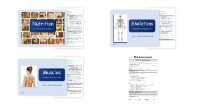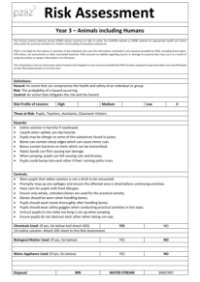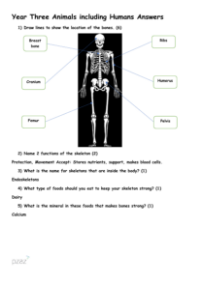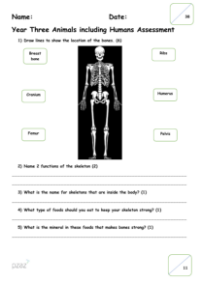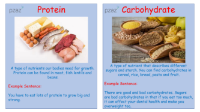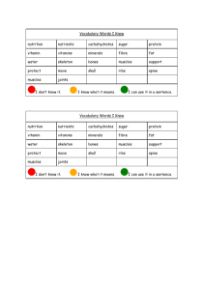Animals including Humans - Knowledge Organisers
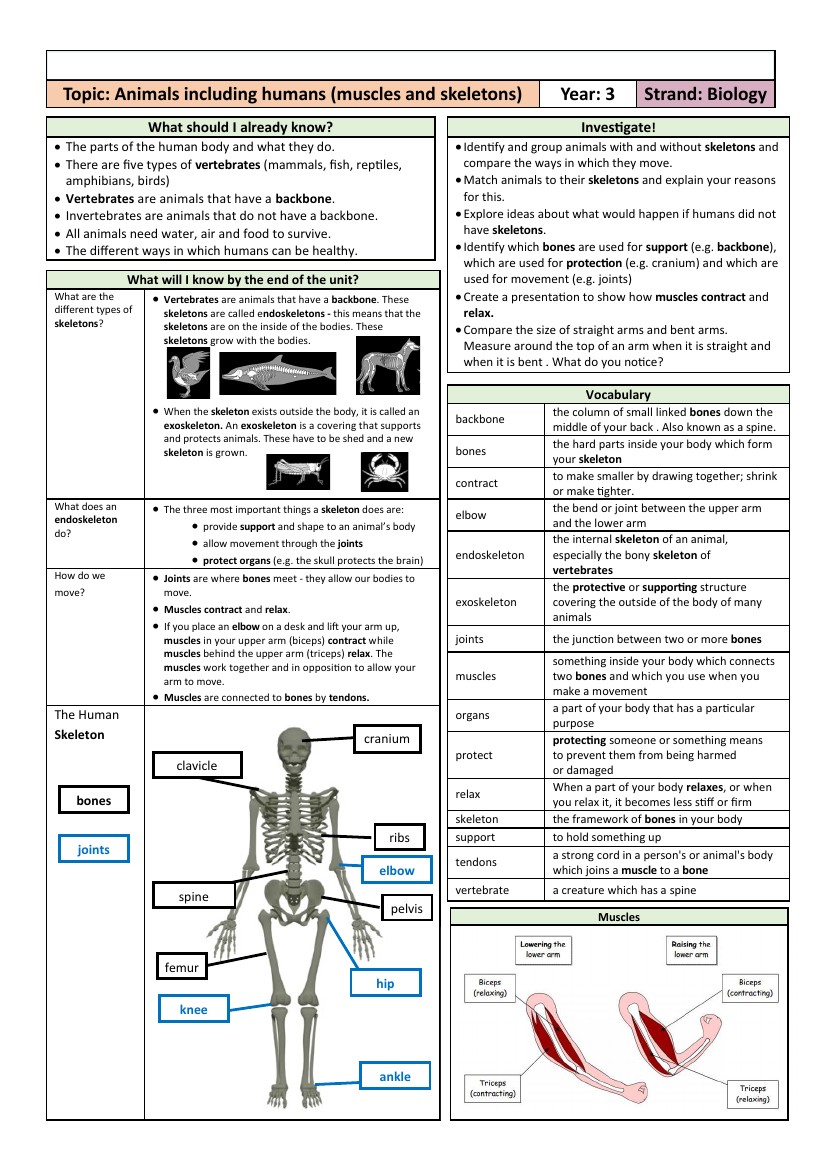
Science Resource Description
This educational material is tailored for Year 3 students studying biology, focusing on the topic of animals, including human anatomy, specifically muscles and skeletons. Initially, students are expected to have a foundational understanding of the human body and its functions, the classification of vertebrates, the distinction between vertebrates and invertebrates, and the basic needs of all animals. They should also be aware of the various ways humans can maintain health. The investigative part of the unit encourages hands-on learning, prompting students to group animals based on the presence of skeletons, match animals to their skeletal structures, and consider the implications of a human body without a skeleton. They will explore the functions of bones, such as support, protection, and movement, and will delve into how muscles work in tandem with the skeletal system to facilitate movement.
By the end of the unit, students will have a deeper understanding of the different types of skeletons: endoskeletons found within the body and exoskeletons found outside the body. They will learn the key functions of an endoskeleton, including providing support and shape, enabling movement through joints, and safeguarding vital organs. The unit also covers how muscles and tendons work together to produce movement, such as the contraction and relaxation of the biceps and triceps when lifting an arm. The vocabulary section provides definitions for terms such as backbone, tendons, and vertebrae, which are crucial for understanding the topic. Students will engage in activities that include matching terminology to definitions, identifying the skeletal parts that protect the brain and thoracic organs, and describing the role of tendons. They will also be tasked with labelling muscles and bones on diagrams and explaining their functions, further solidifying their knowledge of the human musculoskeletal system.

